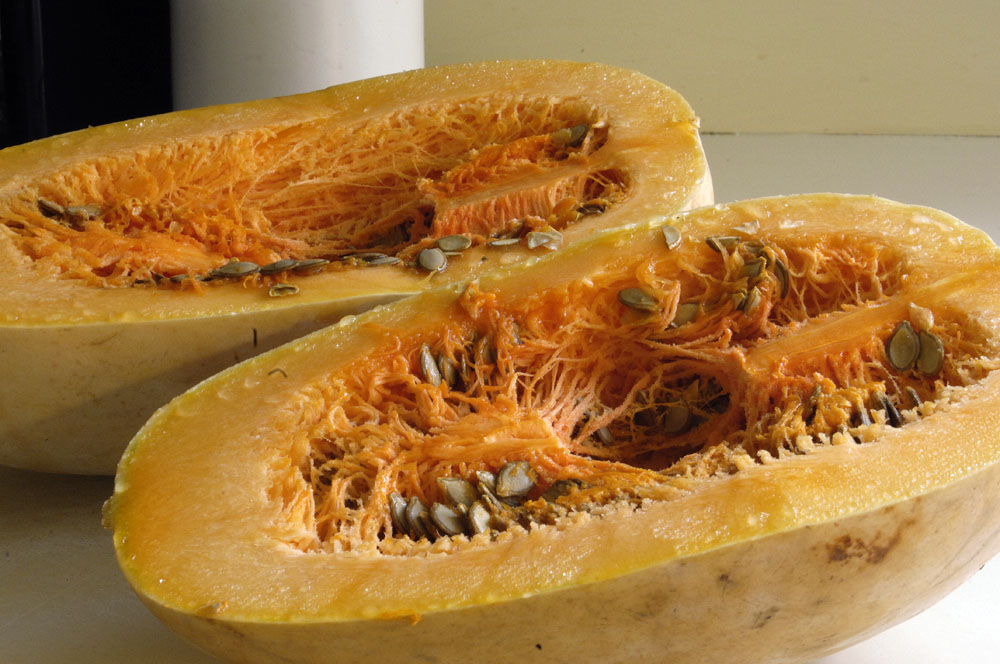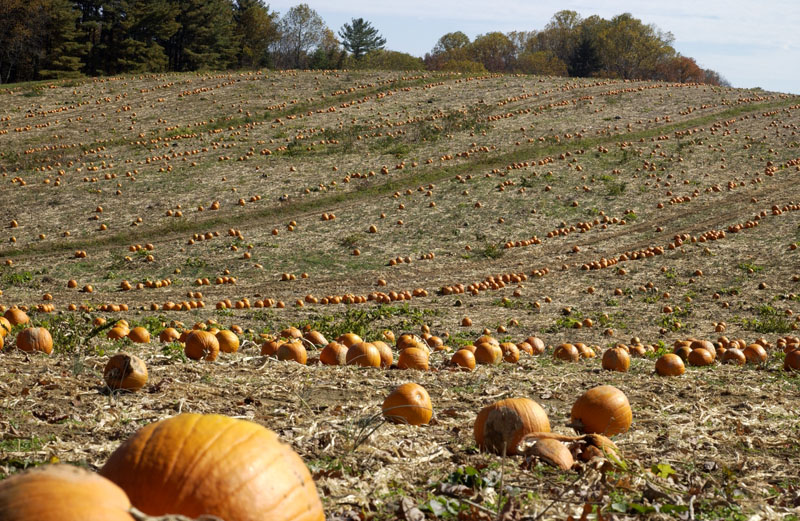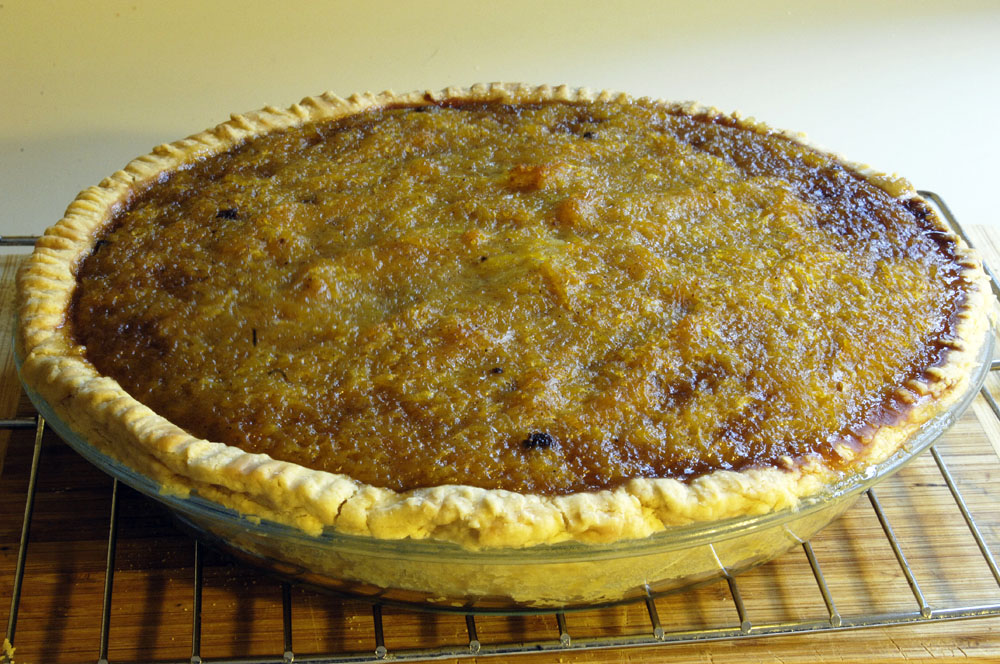
The pumpkin above is a proper “pink pumpkin” for cooking.
I have never used canned pumpkin and never will. It has never made sense to me to open a can for something that’s so easy and fun to work with. However, it’s getting more and more difficult to find cooking pumpkins. Increasingly in the fall, the pumpkin market is flooded with the bright-orange, ugly shaped, so-called Halloween pumpkins.
A friend who works for the county’s agricultural service had posted a photo on Facebook of a bunch of Halloween pumpkins. That seemed like a good opportunity to ask a knowledgeable person why old-fashioned cooking pumpkins have gotten so much harder to find. He posted this, which perhaps was copy/pasted from elsewhere. I apologize for not knowing the original source:
“The bright orange non-edible pumpkin is a relatively recent phenomenon. In the 1960’s Massachusetts farmer John Howden wanted to breed a pumpkin that was easy to carve (Jack-O-Lantern). The criterion — thick stem (lasts longer), shallow ribs, and thin flesh relative to its size (easier carving) — resulted in the Howden variety pumpkin. The Howden totally dominates the Jack-O-Lantern market today. The public desire for other decorative pumpkins led to the proliferation of bright orange pumpkins that dominate roadside markets, grocery, and big box stores.”
So there you have it. I needed a cookable pumpkin for a pie this week, and I finally found one at one of our local treasures, Priddy’s General Store.
If I had a field (and I don’t), I’d love to grow pumpkins. They need more space, though, than I can provide.
And here’s a bit of pumpkin trivia. While writing Oratorio in Ursa Major, I wanted to light an outdoor festival as it might have been lit in 48 B.C. Knowing that jack-o-lanterns come to us from Europe and that pumpkins didn’t, I wondered how all that worked. The research was clear enough — the early Europeans used turnips for lanterns the same way we now use pumpkins. Once pumpkins became available, pumpkins ruled.

Above, rolling out the crust after the pumpkin flesh had been cooked in the steam oven. Pumpkins produce a lot of juice when they’re cooked, and the pumpkin flesh needs to be well drained before making a pie. I always save the pumpkin juice for soup stock.

A field of the wrong kind of pumpkins, near Bell Spur, Virginia


Now, that’s a good-lookin’ pie. Am sure it tasted good too.
Good-lookin’ pie. Am sure it tasted good too. I do wonder what happens to all those Halloween pumpkins if they are not edible.
I think they are finding that cattle will eat them. But I’d imagine that most of them go to waste.